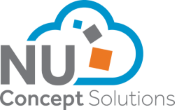NU Concept Blogs

Strategic Workforce Planning: Benefits, principles and tools
Strategic workforce planning is one of the most powerful strategies companies can adopt to achieve their objectives in a competitive...
Strategic workforce planning is one of the most powerful strategies companies can adopt to achieve their objectives in a competitive market. Workforce planning is the process of balancing labour supply (skills) against demand (numbers). It is an essential process that helps organisations optimise their workforce, reduce costs, and improve performance.
What is strategic workforce planning?
Strategic workforce planning involves having the right people with the right skills at the right time. Businesses need to analyse their workforce and determine the steps they need to take to meet current and future staffing needs. Workforce planning includes:
- analysing what human resources are available within an organisation
- forecasting what is needed in terms of working hours or tasks
- identifying the gap between the present and the future
- implementing solutions so that an organisation can accomplish its goals
- developing a workforce plan
Benefits of workforce planning
Workforce planning examines the employee lifecycle and determines how to best recruit, grow, optimise, and retain employees.
Benefits include:
- Enhanced productivity: Workforce planning helps firms identify effective and efficient ways to use their workforce, leading to increased productivity and efficiency.
- Cost savings: When an employee is not the right fit for a job, has no opportunities for advancement, or feels they are unfairly compensated, they are more likely to resign. Estimates show that replacing an employee can cost, on average, between six- and nine months’ salary.
- Reach financial goals: Finance and human resources are partners in business planning. These departments depend on each other since the workforce is a major source of revenue and costs. By understanding workforce needs, businesses can avoid unnecessary hiring or making redundancies.
- Higher employee engagement and retention: By developing strategies to meet workforce needs, you can improve employee engagement and retention, creating a more motivated workforce.
- Improved talent management: Workforce planning enables firms to identify gaps in their workforce, develop training to fill those gaps, and ensure that they have the right people in the right positions.
- Better decision-making: Workforce planning provides businesses with the data and insights they need to make informed HR decisions, such as where to allocate resources or how to restructure departments.
- Increase collaboration: Workforce planning is collaborative, with departments working together to share cross-functional insights that can only be obtained through collaboration.
Three principles of workforce planning
- Right People
Some companies rely on hiring to achieve their goals and expand their workforce to process their workloads. The post COVID-19 remote business world has made it easier to find the best talent, regardless of where it resides. - Right skills
Knowing the skills your company needs is critical to meeting future challenges and effectively filling skill gaps. - Right place and time
For business growth, the right people are needed in the right positions at the right time. Companies must have clear business goals to ensure they’re hiring staff that can meet current and future company objectives.
Workforce planning tools
Workforce planning was once a manual, laborious process with spreadsheets keeping track of the workforce. Thanks to the growth of cloud services for data analytics, scenario planning, and predictive tech, nowadays workforce planning is a lot easier.
Organisations use technology and analytics for workforce planning. Modern workforce planning tools collate data about employee attributes and highlight what needs to happen for employees to perform at their best. It can answer questions such as who has the right skills for a project or who is underutilised in their current role.
Modern workforce planning tools that organisations use to plan and manage their workforce include:
- Workforce management software that provides real-time insights into a company’s workforce. It enables managers to optimise employee scheduling, track time and attendance, and increase productivity. An example of a software planning tool is Oracle Cloud HCM.
- People analytics provide valuable insights into a workforce, enabling managers to make data-driven decisions about workforce planning. By using people analytics, and a software tool such as Tableau, firms can develop talent strategies, improve performance management, promote diversity and inclusion, and boost employee engagement and retention.
- Predictive analytics tools like IBM Watson Talent Insights use data analysis to identify workforce trends and patterns, helping managers make data-driven decisions about hiring, training, and retention.
- Talent management systems enable firms to track and manage staff development, from recruitment and onboarding to career development and succession planning. One example is Cornerstone LMS.
- Employee engagement platforms such as Workday Peakon provide tools and resources to engage and motivate employees, including performance feedback, recognition, and training.
- Business intelligence (BI) software such as Microsoft PowerBI provides companies with insights into metrics including revenue and profitability, helping managers align workforce planning with wider business goals.
- 3D modelling technology enables managers to make decisions based on scenarios. For example, what skills do we need to hire? Which training will have the biggest impact on staff retention? Simio is a cloud-based simulation and modelling software that allows managers to create 3D models.
Given the forecasted changes in the global economy, together with anticipated skills shortages, particularly in the tech sector, now is an ideal time to look at your workforce planning. Workforce planning takes time and effort, but it’s crucial in creating a future-ready company. To discuss your workforce planning needs, get in touch with us today Email us at
